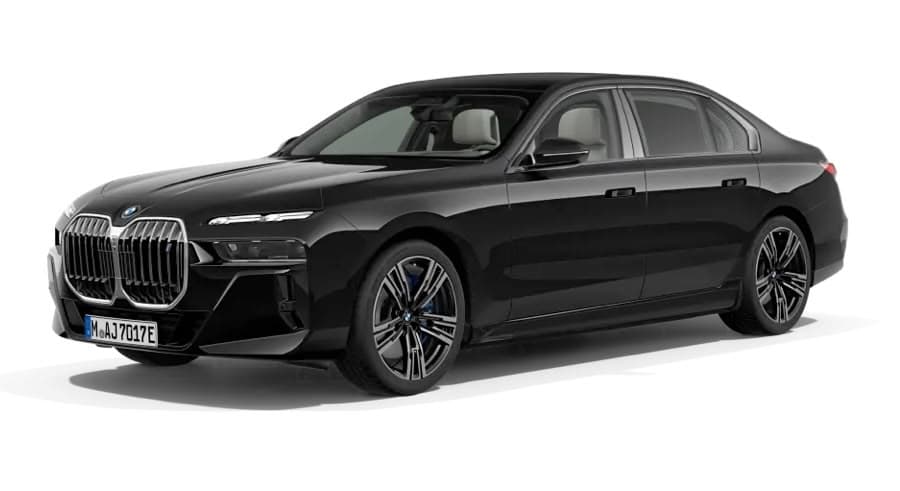BMW i7

Price Range
$289,500
Range (WLTP)
607 km
Battery Size
105.6 kWh
Variants
Performance
0-100 km/h
4.7 sTotal Power
400 kWTorque
745 NmTop Speed
240 km/hDrive
AWDRange & Efficiency
WLTP Range
607 kmWLTP Consumption
196 Wh/kmHighway Range
473 kmYour Real Range
Calculate Battery & Charging
Battery (nominal)
105.6 kWhBattery (usable)
101.7 kWhBattery type
UnknownAC Charging
11 kWDC Charging
195 kWVehicle-to-Load (V2L)
NoDimensions & Weight
Length
5391 mmWidth
1950 mmHeight
1544 mmGround Clearance
136 mmWeight
2715 kgShape
Upper Large SedanSeats
5Storage & Towing
Boot Space
500 LBoot Space (Max)
—Frunk
—Towing (Braked)
2000 kgTowing (Unbraked)
750 kgHow many BMW i7 have been sold in NZ?
There have been 28 registered to date (all NZ new).
BMW i7 registrations
Monthly units (includes new and used import)
